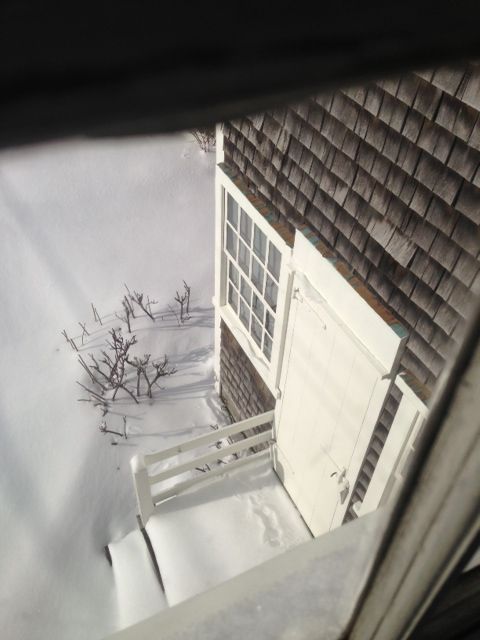Maria Mitchell Subject of New Choral Work, “The Ways of Stars”
Nantucket, MA – During her years at Vassar College, one of Maria’s classes created a song about her set to the music of “The Battle Hymn of the Republic.” Another class, commissioned a bust of their beloved professor – it still stands in the niche at the Vassar College Observatory and the MMA has a bronze copy that was donated to the Nantucket Maria Mitchell Association (MMA) about a decade ago. Maria was secretly a bit pleased by both, though she was not pleased with posing for a bust that required her having to be measured.
People continue to be inspired by her and to find ways to commemorate her life and work. Over the last year or so, the MMA has been speaking with the Atlanta Master Chorale as they put together their performance “The Ways of the Stars” by composer Jake Runstead.
The Atlanta Master Chorale is an over forty-year-old chorale group that has received numerous accolades over the years. Before the COVID-19 Pandemic took hold of the country and the world, the group performed a choral piece by Runstead concerning the fears faced by Beethoven as he approached the loss of his hearing. The Chorale was inspired by this work and commissioned Runstead for its own piece. Runstead chose to look at Maria Mitchell and her life and work. This particular piece focuses on her eclipse viewing trip to Burlington, Iowa in 1869. She travelled out West with several of her students to observe, creating quite a stir as the only all-female group and also for the simple fact they were a group of women travelling cross country. She would publish an account of the eclipse in the October 1869 edition of “Hours at Home” and this is what inspired Runstead.
“The MMA is very excited about this musical piece and I have been having ongoing discussions with the Chorale’s Executive Director and also Mr. Runstead. They had originally planned to premiere the work last year but due to the pandemic, they could not. So I am very excited to hear it. I have read it but that is certainly not the same. I think Maria Mitchell would be secretly pleased,” says Jascin Leonardo Finger the MMA’s Deputy Director and Curator of the Mitchell House where Maria was born in 1818.
The world premiere of the piece will be performed at Emory University March 11 and 12 and there is a virtual offering. The Chorale will also be presenting several discussion panels which will include women in STEM and also Runstead discussing his work and how he was inspired by Maria Mitchell. Tickets for the livestreamed concert can be purchased here:
https://www.atlantamasterchorale.org/concerts
The Maria Mitchell Association is a private non-profit organization. Founded in 1902, the MMA works to preserve the legacy of Nantucket native astronomer, naturalist, librarian, and educator, Maria Mitchell. The Maria Mitchell Association operates two observatories, a natural science museum, an aquarium, a research center, and preserves the historic birthplace of Maria Mitchell. A wide variety of science and history-related programming is offered throughout the year for people of all ages.
Atlanta Master Chorale has crafted one of America’s finest choral sounds, bringing singers and audiences to the place where music touches spirit. Started in 1985 as the Gwinnett Festival Singers, the group gained momentum well beyond its initial suburban reach, drawing singers and audiences from throughout metropolitan Atlanta. Artistic Director Eric Nelson has led Atlanta Master Chorale since 1999. Throughout its nearly four decades of development, Atlanta Master Chorale has consistently celebrated material drawn from a broad spectrum of choral music. Atlanta Master Chorale audiences enjoy nearly 100 different pieces over four concerts each season, featuring music from nearly every period and genre, including historic and newly commissioned a cappella songs as well as major and minor accompanied works. The ensemble's choral series, published by MorningStar/E.C. Schirmer, captures new repertoire premiered by Atlanta Master Chorale, helping to add vibrant new music to the choral field.
For Immediate Release
February 22, 2022
Contact: Logan Gomes, Director of Advancement
Recent Posts




